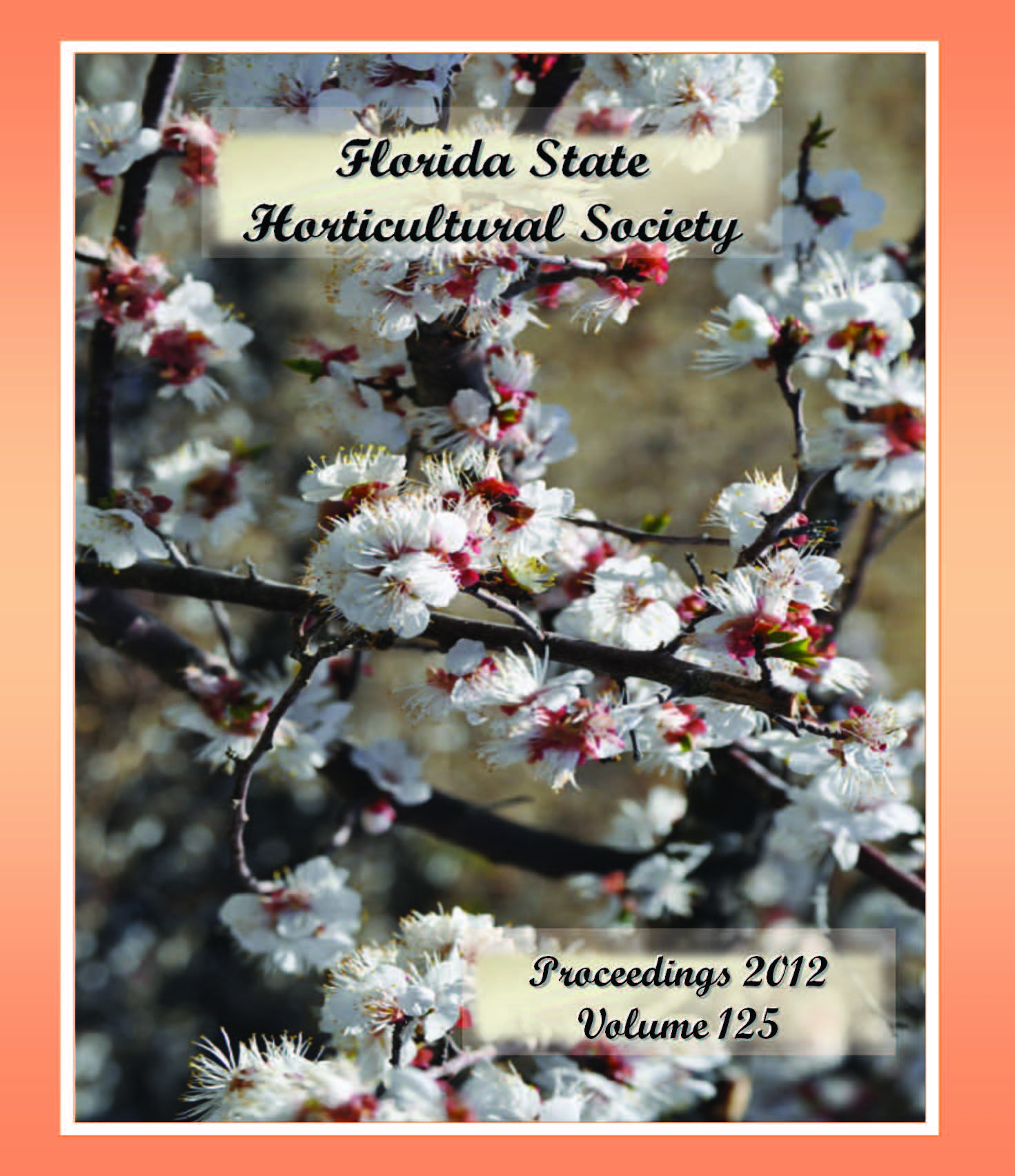Production of Nitric Oxide by the Abscission Agent CMNP and Its Impact on Citrus Fruit Loosening
Abstract
The following study was conducted to determine if the abscission agent CMNP (5-chloro-3-methyl-4-nitro-1H-pyrazole) can produce nitric oxide (NO), if NO promotes fruit abscission, and if alcohol dehydrogenase (ADH) can produce NO. CMNP was applied to run off on one-half of a ‘Valencia’ tree with 300 ppm CMNP in Apr. 2011. Fruit detachment force (FDF) of treated fruit decreased from 80 N to 10 N. NO increased in treated fruit from undetectable to about 1.2 nM/g fresh weight by 48 h after application and declined to below 0.2 nM/g fresh weight by 120 h. Additional untreated fruit were clipped from a ‘Valencia’ tree and fruit were dipped in a 2.0 mM solution of sodium nitroprusside, which releases NO after exposure to water. FDF of fruit dipped for 45 min in the solution and held at 25 °C declined similarly as after application of CMNP to field grown trees. FDF of treated fruit held at 10 °C did not decline. CMNP inhibited ADH activity in vitro. Purified ADH in solution with CMNP did not produce NO2–as measured by the Griess method, but whether it produces NO directly was not determined. The results indicate that CMNP applied to field grown trees may be converted to NO, which then promotes abscission of sweet orange. The methods used to determine if ADH produced NO were inconclusive in this study.

